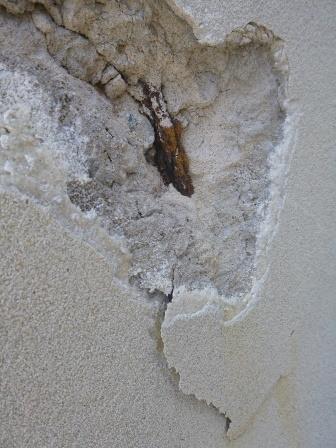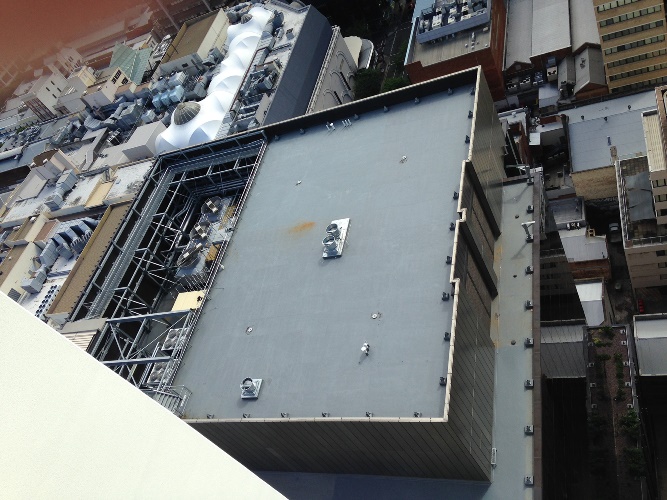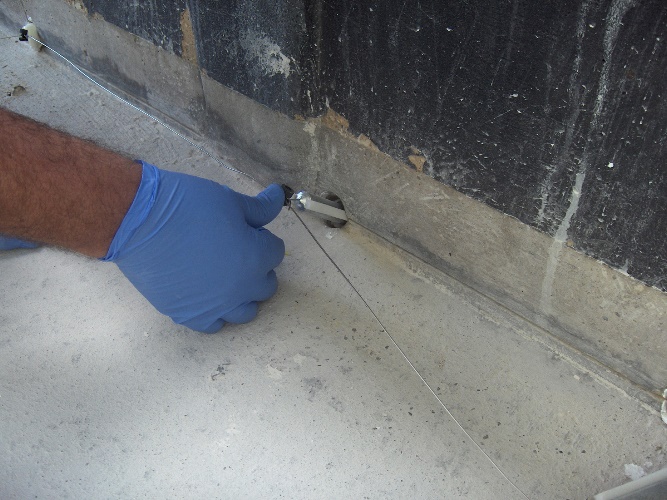Corrosion of the reinforcing steel in concrete is a worldwide problem that causes a range of economic, aesthetic, and utilization issues. However, if corrosion effects are considered in the design phase and the right decisions are made prior to construction, buildings can be built to resist corrosion for as long as possible.
The corrosion of steel in concrete is accelerated in harsh environments, especially in coastal, tropical, or desert locations where high salt levels or extreme temperatures can accelerate the rate of decay. Usually, the most exposed elements deteriorate first; however, much of the actual corroded reinforcement is not visible and it may take five to 15 years of active corrosion before cracks initiate in the concrete.
Corrosion affects all concrete buildings and structures around the world to some extent, with an estimated annual cost of billions of dollars to national economies. It is important that owners of high-value assets understand the cost implications of ignoring the effects of corrosion on concrete buildings and structures. Concrete that falls from buildings where spalling is occurring poses a safety risk.
Causes of Corrosion
The high pH (alkalinity) of concrete forms a passive film on the surface of the reinforcing steel rods that prevents or minimizes corrosion. Reduction of the concrete’s pH by carbonation or the ingress of chlorides (salt), the two most common causes of concrete corrosion, causes the steel's passive film to degrade.
Carbonation is the result of carbon dioxide (CO2) dissolving in the concrete pore fluid, which reacts with calcium from calcium hydroxide [Ca(OH)2] and calcium silicate hydrate in the cement to form calcite (CaCO3). Within a relatively short space of time, the surface of fresh concrete will have reacted with CO2 from the air. Gradually, the process penetrates deeper into the concrete. After a year or so, depending on the water/cement ratio, carbonation may typically have reached a depth of 1 mm for dense concrete with low permeability or up to 5 mm for more porous and permeable concrete.
Chlorides, usually from seaside splash or windblown locations, will migrate into the porous concrete over time. Eventually, the concentration of chlorides reaches critical levels where the steel reinforcement is located. Also, in older concrete structures, calcium chloride (CaCl2) may have been used at the time of construction as a concrete set accelerator.
 When the passive film degrades, the reinforcing steel will corrode in the presence of oxygen and moisture. As the reinforcing rods corrode, the rust products can cause the volume of the rods to increase up to six times that of the original steel. This increases pressure on the surrounding material, which slowly cracks the concrete. Over the course of many years, cracks will appear on the surface of the concrete, which leads to spalling and weakening of concrete infrastructure.
When the passive film degrades, the reinforcing steel will corrode in the presence of oxygen and moisture. As the reinforcing rods corrode, the rust products can cause the volume of the rods to increase up to six times that of the original steel. This increases pressure on the surrounding material, which slowly cracks the concrete. Over the course of many years, cracks will appear on the surface of the concrete, which leads to spalling and weakening of concrete infrastructure.
As the degradation of the steel and weakening of the concrete occurs from the inside and may not be seen for many years, it is often referred to as “concrete cancer.” According to Ian Godson, managing director of Infracorr Consulting PL, it might take up to 15 years before any cracking is visible. “It is a hidden problem, which means that when you find it, it is often well advanced, very much like the tip of the iceberg,” Godson says.
Concrete Corrosion Repair and Prevention
There are many advantages of planning for corrosion control and mitigation. One advantage is that the life of an asset is extended. Reduced maintenance time and costs is another advantage. Additionally, reduced maintenance requirements increase the asset’s overall utilization and can improve its environmental sustainability.
The traditional method of concrete repair is to remove the cracked and degraded concrete to a depth of 20 to 30 mm behind the reinforcing bars to fully expose the rusted reinforcement and move the contaminated concrete away from the steel. All corroded material is removed and the steel is either treated or replaced. Concrete repair mortars are then applied to the surface. Modern repair mortars are modified with a polymer to improve adhesion and resist the ingress of contaminants.
Coatings are commonly used in combination with patch repairs to further reduce advancing carbonation and chlorides. According to Justin Rigby, coatings consultant at Remedy Asset Protection, “Concrete is a great material and is generally impervious at the start, but to increase durability, a coating should be applied.” Elastomeric waterproofing membranes can be either rolled or sprayed onto a concrete surface. Flat rooftops allow membranes to be applied with a roller. Where there are complex geometries, however, spraying the membrane is the most effective application method.

Although patch repairs remove the contaminated concrete from the deteriorating sections, they may not address other areas of hidden corrosion, and accelerated deterioration to the surrounding areas may result with failure occurring again within three to five years. “One of the limitations of patch repairs is that you have to remove large quantities of sound concrete to solve the problem, causing significant noise and disruption to the building occupants,” Godson adds.
The main alternative to patch repair is cathodic protection (CP). Impressed current CP (ICCP) is a technique that sends a small electrical current through the concrete to the steel reinforcement in order to stop the corrosion of the steel. The benefit of ICCP is that the extent of concrete removal for repair is vastly reduced, with only the spalled and delaminated concrete requiring repair. Once CP is installed, the ongoing corrosion can be controlled for the long term, with future spalling and deterioration eliminated even in concrete that is severely contaminated with chlorides or carbonation. For a durable and efficient ICCP system, selection of the anode system is a vital design consideration. Incorrect selection and placement of the anode system can result in poor performance and vastly reduced life of the CP installation.
A relatively recent development has been hybrid CP, which utilizes zinc anodes installed in drilled holes with the anodes powered for an initial period of around 10 days. The high initial CP current totally passivates the steel reinforcement, causing chlorides to migrate away from the bars and restoring an alkaline environment in the concrete.
Following the initial impressed current phase, the temporary power supply and cables are removed, with the anodes then connected to the reinforcement via locally placed junction boxes to provide ongoing galvanic protection. This relatively low galvanic current maintains the ongoing passive condition at the reinforcement and prevents further concrete damage. Hybrid CP systems are usually designed to give a design life of 30 years or longer.

Hybrid CP offers all the advantages of ICCP, including corrosion control and reduced concrete removal, without the high cost and maintenance of power supplies, cables, and control systems. Areas and structures that were previously difficult and uneconomical to treat with ICCP can now be protected using hybrid CP technology. This includes small scale and remote structures situated in non-powered sites such as bridges, marine dolphins, and culverts. In the case of building repairs, hybrid CP offers significant advantages over ICCP by eliminating the need for unsightly and costly cabling and power supplies
The Australasian Corrosion Association (ACA) (Kerrimuir, Victoria, Australia) works with industry and academia to research all aspects of corrosion to provide an extensive knowledge base that supports best practices in corrosion management. This helps ensure that all impacts from corrosion are responsibly managed, the environment is protected, public safety is enhanced, and economies are improved. Corrosion specialists certified by the ACA, NACE International, and other organizations have the experience and understanding of corrosion causes and solutions that allow them to recommend mechanisms and procedures to consultants and asset owners.
Source: ACA. For further information, please visit the ACA Web site: corrosion.com.au.